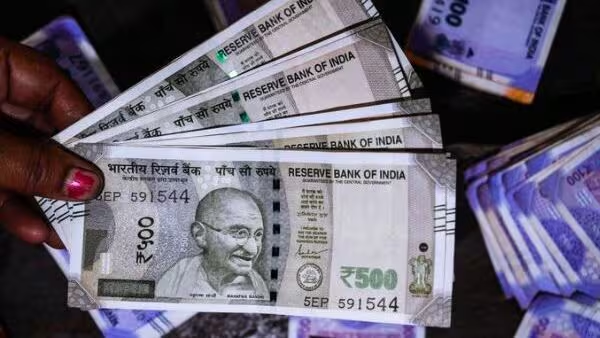
New Factors on the Indian Rupee
Indian Rupee Faces Volatility Despite Modest Recovery
The Indian rupee showed a slight recovery on Tuesday, rising by 3 paise to 84.69 against the US dollar after reaching an all-time low of 84.76. While the recovery offers some relief, the currency remains under pressure due to global factors, including the strength of the US dollar, geopolitical risks, and foreign investment outflows. Market participants are awaiting the Reserve Bank of India’s (RBI) policy review on December 6 to assess the potential for further intervention and stabilization efforts.
Factors Contributing to the Rupee’s Weakness
The rupee’s recent decline has been driven by a combination of global and domestic factors:
- US Dollar’s Resilience
The US dollar continues to strengthen, driven by the Federal Reserve’s tight monetary policy and a strong US economy. The Dollar Index recently reached a high of 108.07, exerting pressure on emerging market currencies like the Indian rupee. - Geopolitical Tensions
Global geopolitical instability, particularly in the Middle East, has led to increased demand for safe-haven assets like the US dollar. This has had a negative impact on currencies like the rupee, which are more susceptible to external risks. - Foreign Portfolio Outflows
Foreign portfolio investment in India has been declining, with investors seeking safer returns in developed markets. This outflow of capital has put additional pressure on the rupee.
Impact of a Weaker Rupee on the Indian Economy
While a falling rupee has some advantages, it also presents challenges for the Indian economy:
- Boost to Exports
A weaker rupee can help Indian exports become more competitive in the global market, especially for sectors like information technology, textiles, and pharmaceuticals. - Rising Import Costs
On the other hand, a weaker rupee increases the cost of imports, particularly for essential goods such as crude oil, machinery, and electronics. This could lead to inflationary pressures and higher living costs. - Impact on Inflation
As the cost of imports rises, it is likely to put upward pressure on inflation, which could have a negative impact on consumer purchasing power and the cost of living.
Stock Market Shows Resilience Amid Currency Volatility
Despite the rupee’s weakness, India’s stock market performed well. The Sensex surged 597.67 points, closing at 80,845.75, while the Nifty gained 181.10 points to finish at 24,457.15. This indicates that investors remain confident in India’s long-term economic prospects, even in the face of currency challenges.
RBI’s Role in Mitigating Currency Volatility
The Reserve Bank of India is expected to play a key role in stabilizing the rupee through various measures, including intervention in the forex market. The RBI’s foreign exchange reserves are a critical tool for mitigating volatility and supporting the rupee’s value.
- Monetary Policy and Inflation Control
The RBI’s upcoming monetary policy announcement is likely to address the issue of inflation while maintaining economic growth. If the central bank maintains its hawkish stance, it could help stabilize the rupee. - Forex Interventions
The RBI may also engage in forex market interventions to curb the rupee’s decline. By using its foreign reserves, the RBI can sell dollars to manage the rupee’s value and prevent excessive depreciation.
Looking Ahead: What to Expect for the Rupee
The outlook for the Indian rupee depends on several key factors:
- Global Economic Developments
The US dollar’s strength will continue to be a major determinant. If the Federal Reserve raises interest rates further, the rupee could remain under pressure. - Domestic Economic Performance
India’s growth prospects, inflation rates, and fiscal health will all play a role in the rupee’s future movement. A strong domestic economy could help stabilize the currency. - Geopolitical Factors
The global geopolitical landscape, particularly in the Middle East, will continue to impact the rupee’s performance.
Will the Rupee Recover or Face More Volatility?
While the Indian rupee has made a small recovery, its future remains uncertain. With global uncertainties and domestic economic pressures, the rupee’s movement will depend on upcoming developments. Investors and policymakers will closely monitor the situation to gauge the currency’s stability in the weeks ahead.